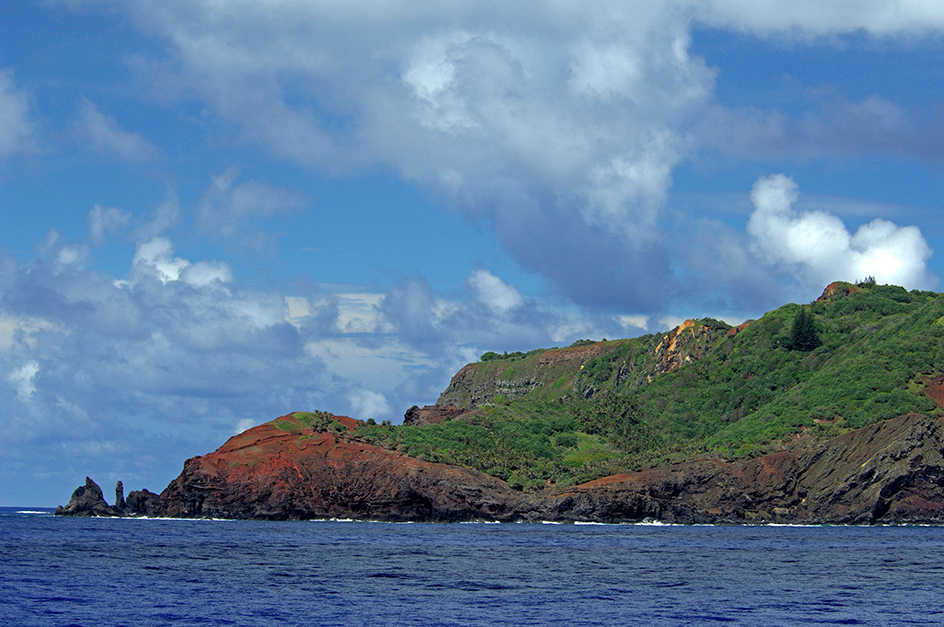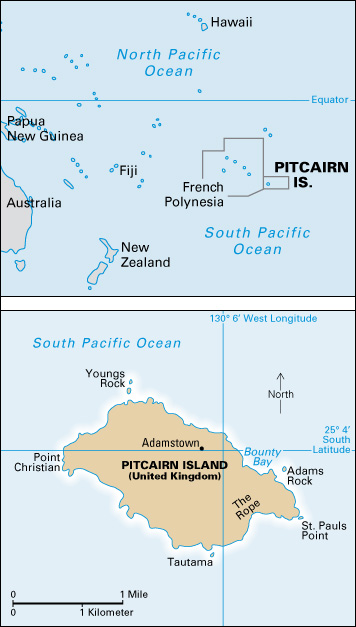Pitcairn Island is a small, isolated island in the South Pacific Ocean. It lies just south of the Tropic of Capricorn and about 5,000 miles (8,000 kilometers) east of Australia. Pitcairn is famous as the home of the mutineers of the British naval ship Bounty.

Pitcairn covers only about 2 square miles (5 square kilometers). The island rises sharply from the sea to an elevation of about 820 feet (250 meters). The interior is rugged, but it has fertile soil. The climate is mild. Average temperatures range from 75 °F (24 °C) in February to 66 °F (19 °C) in August. Rainfall averages 80 inches (200 centimeters) yearly.
Pitcairn is the main island of an overseas territory of the United Kingdom called the Pitcairn Islands Group. The other islands, all uninhabited, are Ducie, Henderson, and Oeno. The British high commissioner to New Zealand, in the role of governor of the Pitcairn Islands, represents the British monarchy. The mayor, who presides over the Island Council, serves as head of government. The council, which includes both elected and appointed members, handles local affairs.

About 50 people live on Pitcairn. Most of them are descendants of the Bounty mutineers and their Polynesian wives. Adamstown is the island’s only settlement. Most of the people farm and fish for a living. The main crops are bananas, citrus fruits, coconuts, pumpkins, taro, watermelons, and yams. The people also sell hand-carved wooden figures to passengers of ships that stop at the island. The government gets much of its revenue by selling postage stamps that bear the words “Pitcairn Islands” to collectors.
Pitcairn was inhabited in prehistoric times, probably by Polynesians. However, no one was living there in 1767, when the English navigator Philip Carteret and his crew became the first Europeans to reach it. Carteret named the island after Robert Pitcairn, the crew member who first sighted the island.
In 1789, mutineers led by Fletcher Christian took control of the Bounty from Captain William Bligh in the South Pacific. Bligh and 18 nonmutineers were cast adrift in a small boat. In 1790, nine of the mutineers settled on Pitcairn. These British sailors brought 19 Polynesians with them—6 men, 12 women, and a girl. Disputes over women eventually led to fighting among the men. By 1808, when an American ship discovered the mutineers’ hideout, all the men except the mutineer John Adams were dead. But the mutineers had left 25 children. In 1856, many of Pitcairn’s people moved to Norfolk Island.
See also Bligh, William; Nordhoff and Hall; Norfolk Island.
